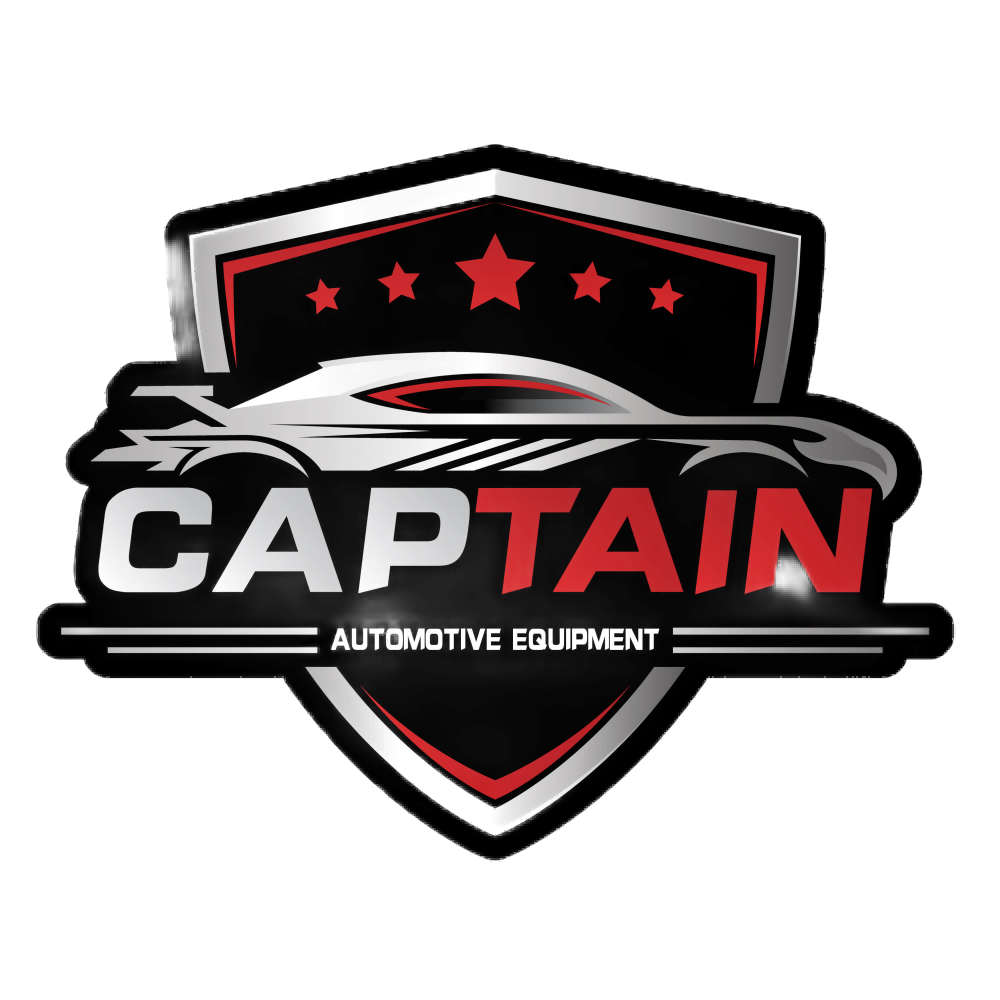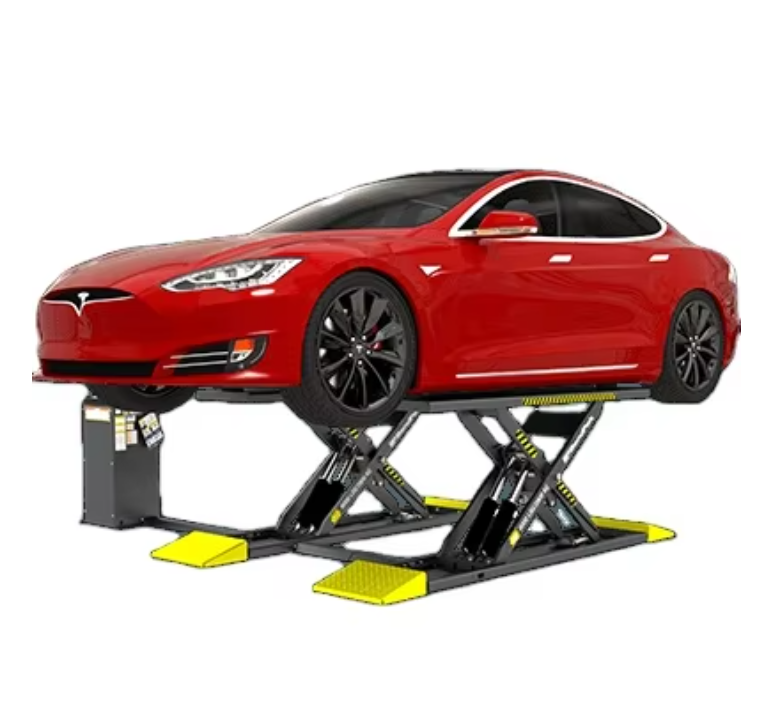Ceiling Height and Vertical Clearance Requirements
Minimum Height Standards for Different Lift Types
Getting the right ceiling height when setting up a car lift matters a lot for proper installation. Most standard lifts need at least 10 to 12 feet of headroom, though exact numbers can vary based on how each particular model works. Take two post lifts versus four post ones for example the former typically needs less vertical space because of their simpler mechanical setup. The reason behind these differences comes down to basic engineering principles how each type functions mechanically and structurally. Don't forget about checking local building codes too they aren't just bureaucratic hurdles but actually important for keeping everyone safe while working around heavy equipment. Besides ceiling height, there's also plenty of floor space needed around the lift itself so technicians can move freely without bumping into things during repairs.
Garage Door Track Modifications for Clearance
Checking out the current garage door tracks before installing a car lift is pretty important stuff if we want enough space for everything to work right. Most folks find they need to tweak things around here somehow. Maybe adjust where the garage door opener sits or shift those metal tracks up higher so there's room when the lift goes up and down. If someone skips these changes, well let's just say their new toy won't really work how it should and could even become dangerous over time. Getting help from someone who actually installs these lifts regularly makes all the difference though. They know exactly what needs changing based on how each garage is built differently. Their advice helps make sure whatever gets installed works smoothly alongside whatever else already hangs out in that space without causing headaches later on.
Overhead Operational Safety Margins
Getting those safety margins right makes all the difference in keeping lifts running both safely and efficiently. Most technicians recommend leaving at least two feet of space between the top of the raised vehicle and whatever's overhead. That extra room isn't just good practice it actually stops things like headroom collisions during routine maintenance work. Don't forget to check those numbers regularly too. Follow what the equipment maker says about inspection intervals and never skip those routine looks around. When someone takes the time to measure clearance heights before starting any job, they're not just ticking boxes they're creating a safer workplace for everyone involved. And let's face it, regular maintenance doesn't just keep things running smoothly it saves money in the long run by preventing bigger problems down the road.
Floor Space Dimensions for Installation and Operation
Required Bay Width for Vehicle Positioning
When it comes to setting up bays for vehicles under lifts, the right width really depends on what kind of lift we're talking about. Most shops find they need somewhere between 10 and 14 feet though. Getting this measurement right matters a lot because there needs to be enough room to move safely around cars while doing repairs. If the space is too tight, mechanics end up working in awkward positions which increases risk of injury. We've seen plenty of incidents in crowded service centers where limited space leads to collisions or dropped tools. Taking time to measure properly isn't just about following regulations either it makes everyday operations smoother and keeps everyone safer in the long run.
Entry/Exit Space for Safe Vehicle Movement
Getting the entry and exit areas right around vehicle lifts makes a big difference in preventing accidents during those tricky maneuvers on and off the equipment. Most shops find that keeping about 3-5 feet of open space all around works best for moving cars safely. This isn't just good practice for everyday work flow either. These measurements actually help meet OSHA standards too, which means fewer headaches with inspections and ultimately safer conditions for everyone working in the shop environment.
Clearance Around Lift Posts and Arms
Getting enough space around every post and arm on a car lift matters a lot for both safety and how well things work. Most shops find they need at least two feet of room there so mechanics can actually get their hands on tools and other gear while working on cars. When this space gets cut down too much, bad stuff happens. Not just because it's dangerous, but also because everything slows down dramatically. Mechanics end up wasting time trying to maneuver in tight spots, which makes the whole maintenance process take longer than it should. That extra time adds up across all the vehicles coming through the shop.
Concrete Floor Specifications for Stability
Minimum Thickness and PSI Requirements
When installing a car lift, the concrete floor needs to be strong enough to handle what's coming. We're talking about a minimum thickness of around 4 inches, and the concrete should have at least 3000 PSI compressive strength. These numbers aren't just random requirements they actually determine whether the floor can hold up under the combined weight of the lift itself plus whatever vehicle gets placed on it. Skipping over these basics has led to some serious problems in workshops across the country, including floors cracking right through during routine operations. That's why most experienced installers recommend getting a second opinion from someone who knows concrete work inside out before digging into the project. A quick check now saves headaches later when things start going wrong.
Distance from Walls and Structural Cracks
Installing a car lift requires keeping at least 12 inches between the equipment and walls so nothing gets in the way during operation. Check walls first for cracks or weaknesses before setting anything up because even small damage can compromise how stable the whole system stays over time. Getting an engineer involved early makes sense too. These professionals will look at the concrete foundation, test load-bearing capacity, and point out problems that might not be obvious to someone without training. Spending money on this upfront assessment pays off big time later when avoiding accidents becomes less theoretical and more about real world safety. Most local building codes actually require such inspections anyway, so it's smart business practice as well as good safety protocol.
Anchoring Considerations for Lift Security
Getting the lift properly anchored matters a lot for keeping it stable and making sure operations stay safe. Most manufacturers provide specific instructions about what kind of anchoring works best, usually mentioning things like bolts or those metal plates that get set into concrete. Checking these anchoring points regularly isn't just good practice it actually stops accidents before they happen and makes the whole system last longer. When installers take the time to follow all these safety protocols, lifts tend to perform better day after day without unexpected problems cropping up.
Selecting the Right Lift Type for Your Space
Selecting the right kind of lift for a given workshop space makes all the difference when it comes to getting vehicles serviced properly. Knowing how symmetrical versus asymmetrical lift designs differ helps point people toward better decisions. With symmetrical lifts, weight gets distributed evenly across both sides so the car sits perfectly balanced. While this setup definitely improves overall stability during lifting operations, mechanics often find themselves struggling with limited door clearance. Asymmetrical models give technicians greater freedom to position cars however needed, which means much easier access inside the vehicle for repairs. Before settling on any particular design though, shop owners need to measure their available floor space carefully and think about what kinds of cars pass through regularly. Getting this part right from the start saves headaches down the road and actually boosts day-to-day workflow efficiency quite noticeably.
Symmetrical vs. Asymmetrical Layout Comparisons
Symmetrical lifts spread weight evenly through all four support arms, which makes them great for keeping vehicles centered during service work. While they deliver top notch stability, there's often not much room to get into the vehicle interior because of limited drive through space. When looking at workshop size and what kinds of cars come through, shops need to pick between different lift setups based on their actual needs. Asymmetrical models give technicians more freedom since vehicles can swing out from the front when needed. The extra space around the front end really helps mechanics get in and out without struggling. Getting familiar with these different configurations matters a lot for day to day operations, matching equipment features to what actually happens in the garage.
Two-Post vs. Four-Post Footprint Differences
Footprint matters a lot when deciding between two post and four post lifts. The two post models take up less room, so they work well in tight garage spaces. They aren't as stable as their four post counterparts but still get the job done where space is limited. Four post lifts need more floor area but come with better stability plus extra storage spots around the platform. Garage owners should look at how much space they actually have and what kinds of vehicles they regularly service before making a choice. Getting the footprint right affects how smoothly things flow through the workshop and makes it easier for technicians to move around and access tools while working on different types of cars and trucks.
Space-Saving Benefits of Mobile Lift Systems
For shops working in tight quarters, mobile lift systems offer real value. What makes them so useful is their ability to move around freely and tuck away when not needed, which means they don't take up precious floor space like fixed lifts do. The fact that these units can be rolled from one area to another gives technicians options for different types of repairs and maintenance tasks. Shops that implement these kinds of space saving solutions tend to see better workflow efficiency across the board. When mechanics understand what these systems bring to the table, it changes how they think about shop layout completely. Every inch counts in automotive workshops, and mobile lifts help maximize that space without sacrificing the ability to handle diverse service requirements day after day.
FAQ Section
What is the minimum ceiling height required for a car lift?
Most car lifts require ceilings between 10 to 12 feet, depending on the lift type and design.
Why might garage door track modifications be necessary for lift installation?
Modifications ensure adequate clearance for the lift, preventing operational issues and safety risks.
How much bay width is needed for vehicle positioning under a lift?
The ideal bay width typically ranges between 10 to 14 feet for safe and efficient vehicle movement.
What are the concrete floor requirements for installing a car lift?
The concrete should be at least 4 inches thick with a compressive strength of 3000 PSI to support the lift and vehicles.
What is the difference between symmetrical and asymmetrical lift layouts?
Symmetrical lifts offer balanced weight distribution, while asymmetrical lifts provide more flexibility in vehicle positioning.
Are mobile lift systems beneficial for small spaces?
Yes, mobile lift systems are effective for small spaces due to their flexibility and ease of movement, optimizing space usage.
Table of Contents
- Ceiling Height and Vertical Clearance Requirements
- Floor Space Dimensions for Installation and Operation
- Concrete Floor Specifications for Stability
- Selecting the Right Lift Type for Your Space
- Symmetrical vs. Asymmetrical Layout Comparisons
- Two-Post vs. Four-Post Footprint Differences
- Space-Saving Benefits of Mobile Lift Systems
-
FAQ Section
- What is the minimum ceiling height required for a car lift?
- Why might garage door track modifications be necessary for lift installation?
- How much bay width is needed for vehicle positioning under a lift?
- What are the concrete floor requirements for installing a car lift?
- What is the difference between symmetrical and asymmetrical lift layouts?
- Are mobile lift systems beneficial for small spaces?

